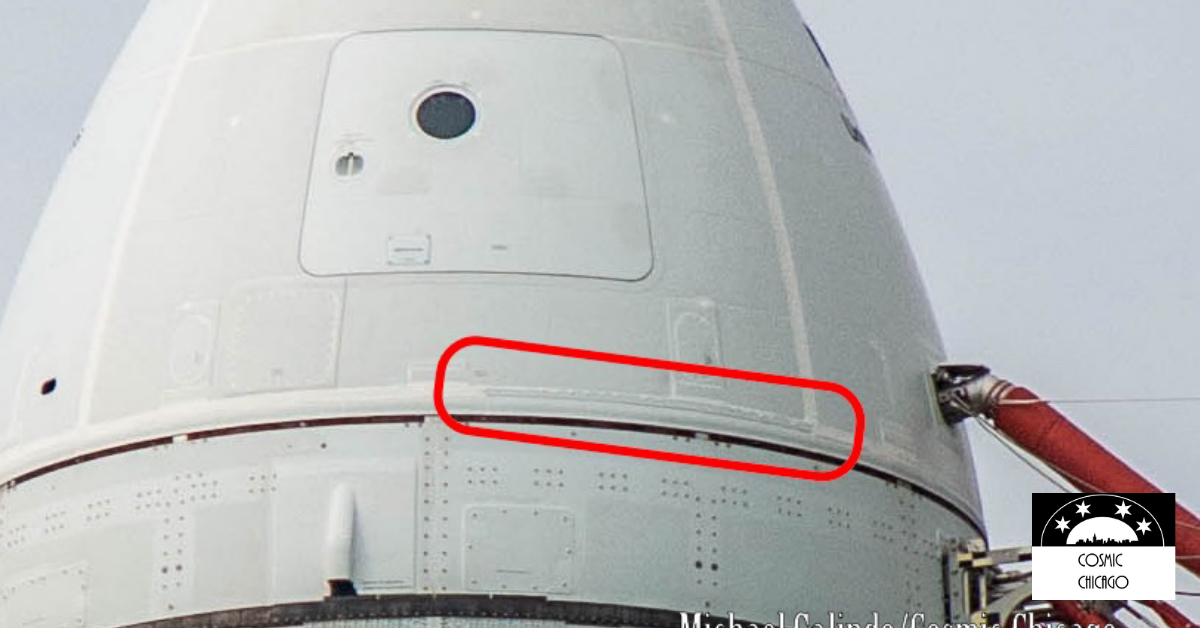Late Monday evening, NASA managers announced they plan to push forward with the launch of Artemis I on Wednesday despite damage to SLS caused by Hurricane Nicole.
The launch countdown began early Monday morning and continued to progress smoothly throughout the day as teams worked on issues mentioned during yesterday’s Mission Management Team (MMT) review. During today’s update on those repairs and concerns, NASA’s Exploration Grounds Systems Program Deputy Manager, Jeremy Parsons, said the team was still on course to proceed with the launch at 12:04 a.m. CST on Wednesday, November 16th.
Two main issues are under discussion by the MMT, a section of caulk on Orion that tore away and an electrical connector on the hydrogen Tail Service Mast Umbilical.

A 10 ft long section of caulk used to cover a seam between the Orion Boost Protective Cover and the Crew Module Adapter delaminated during the Hurricane. Artemis I experienced wind gusts up to 80 mph at the 60-foot level with higher gusts elsewhere on the launch pad. According to Jim Free, NASA’s Associate Administrator for Exploration Systems Development, “this is within the rocket’s capability.”
Because of its location on the rocket, teams cannot perform repairs, but NASA managers determined that this area posed no potential threat. Even if more pieces of this caulk detached during launch, managers believe the possibility of it striking a critical piece of the rocket to be extremely low.

Mike Sarafin, NASA’s Artemis Mission Manager, described how the RTV caulk fills in gaps on the spacecraft to improve aerodynamics. Given the fact that the overall integrity of the RTV is already compromised, this issue was looked at today but potential impacts of any more shedding were considered to, “be bounded and within an acceptable range of risk.”
Teams also replaced an electrical connector on the hydrogen Tail Service Mast Umbilical. Earlier in the week, teams replaced a cable to the connector, but inconsistent data was still being seen. According to NASA, swapping the connector didn’t fix the issue, but they feel they have enough redundant sources of information through the connector to get by.
Another meeting of the MMT is scheduled for 1:30 p.m. CST to determine whether or not to proceed with fueling. With the Orion and SLS powered up, teams will charge flight batteries and perform a final walkdown of the launch structure before leaving the pad.
Wednesday’s launch attempt provides a two-hour window, and coverage will begin on NASA TV at 9:30 p.m. CST.
Related: Artemis I Explained: NASA’s Flight Test to the Moon

